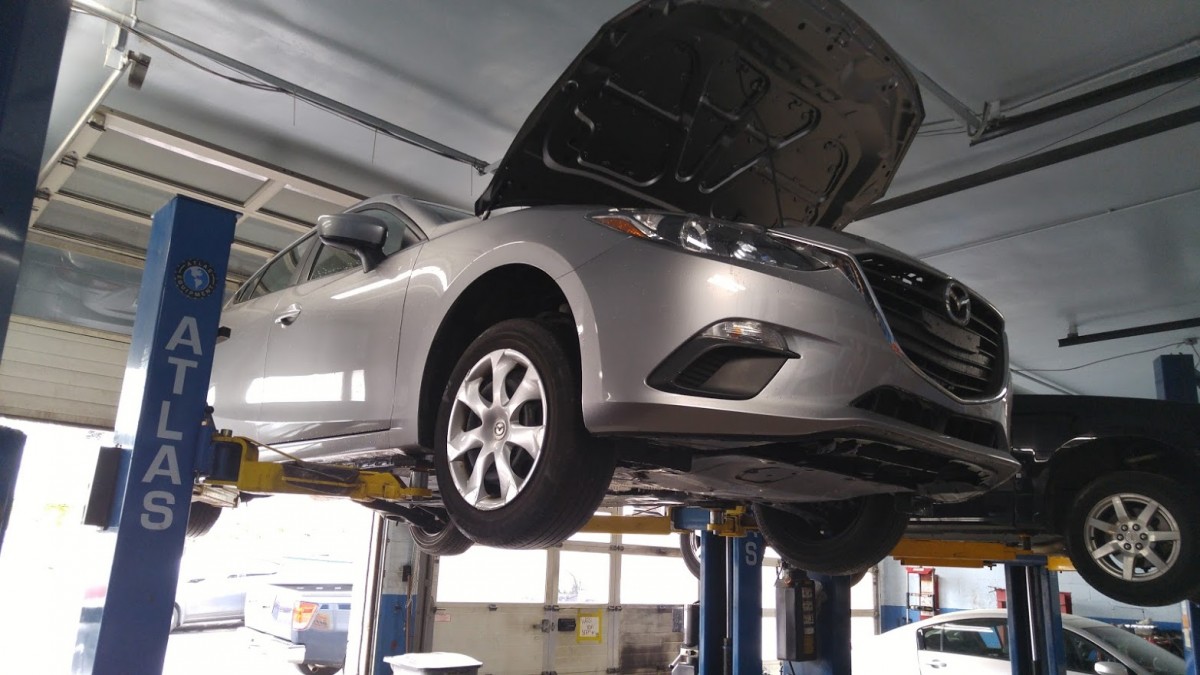Symptoms of Bad Strut Mount
The most common symptoms of a bad strut mount are squeaking noise when turning the steering wheel at low speeds or knocking, banging, clunking, or popping noises when hitting speed bumps or irregularities on the road.
Diagnosing top strut mount problems is recommended as soon as you notice symptoms.

Most strut mounts don’t fail catastrophically. Bad strut mounts can be challenging to diagnose. If your mechanic has determined that your strut mounts are bad, they should be replaced immediately after noticing symptoms. Your mechanic may also recommend replacing the struts at the same time.
If the strut mount fails while driving, it can cause an accident or damage other vehicle parts. It would help if you replaced a bad strut mount as soon as possible to avoid causing other issues, such as premature tire wear or accidents.
Symptoms
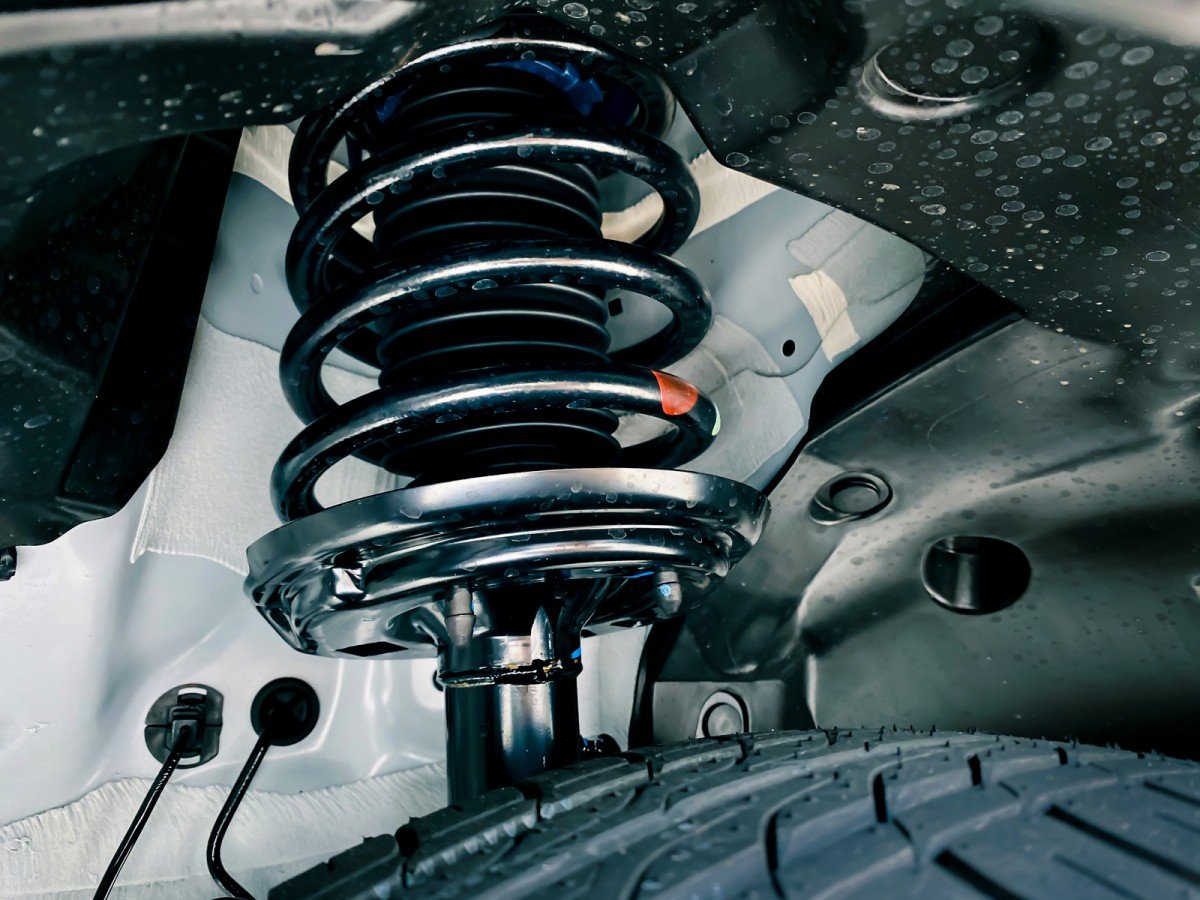
The most common bad top strut mount symptoms are noises and binding. Most customers describe strut mount problems as:
- They hear a noise when turning the steering wheel.
- One tire has uneven wear, typically on the inner side.
- Excessive vibrations at high speeds.
- The steering wheel is hard to turn.
- The steering wheel doesn’t return straight (center) after going around a curve.
- Poor vehicle handling.
- Steering binding.
A strut mount has a rubber component and a bearing. Both these components can fail.
1. Clunk when hitting speed bumps

When turning the steering wheel, a squeak is the most common symptom of a bad strut mount. Another symptom you may notice is hearing a clunking or banging noise when hitting a speed bump, potholes, or irregularities on the road.
You may hear the clunking noise because the rubber inside the strut mount may crack or deteriorate, allowing the metal to hit the other metal part of the strut mount.
2. Uneven tire wear
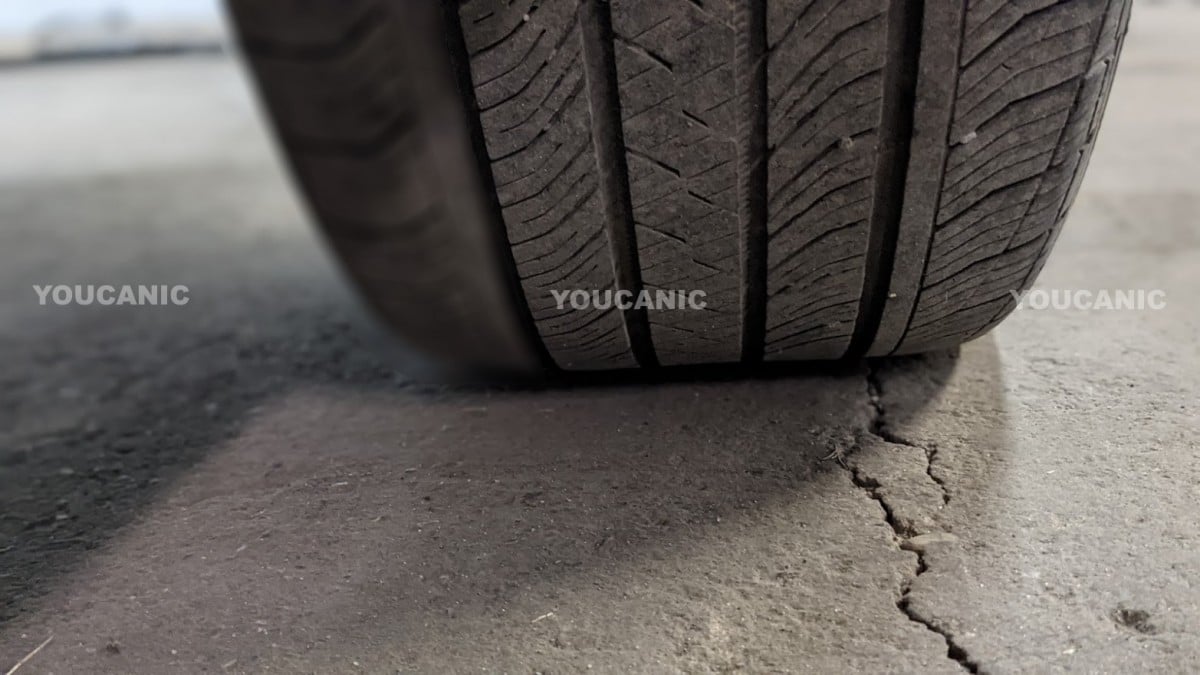
Another common symptom of a bad strut mount is uneven tire wear. As the strut mount wears, it can change the suspension alignment and affect the camber, leading to a negative or positive camber.
Generally speaking, a bad strut mount causes a negative camber, leading to the tires wearing prematurely inside. A bad strut mount can cause excessive camber; the tire may look like it is leaving.
3. The Steering Wheel is Hard to Turn
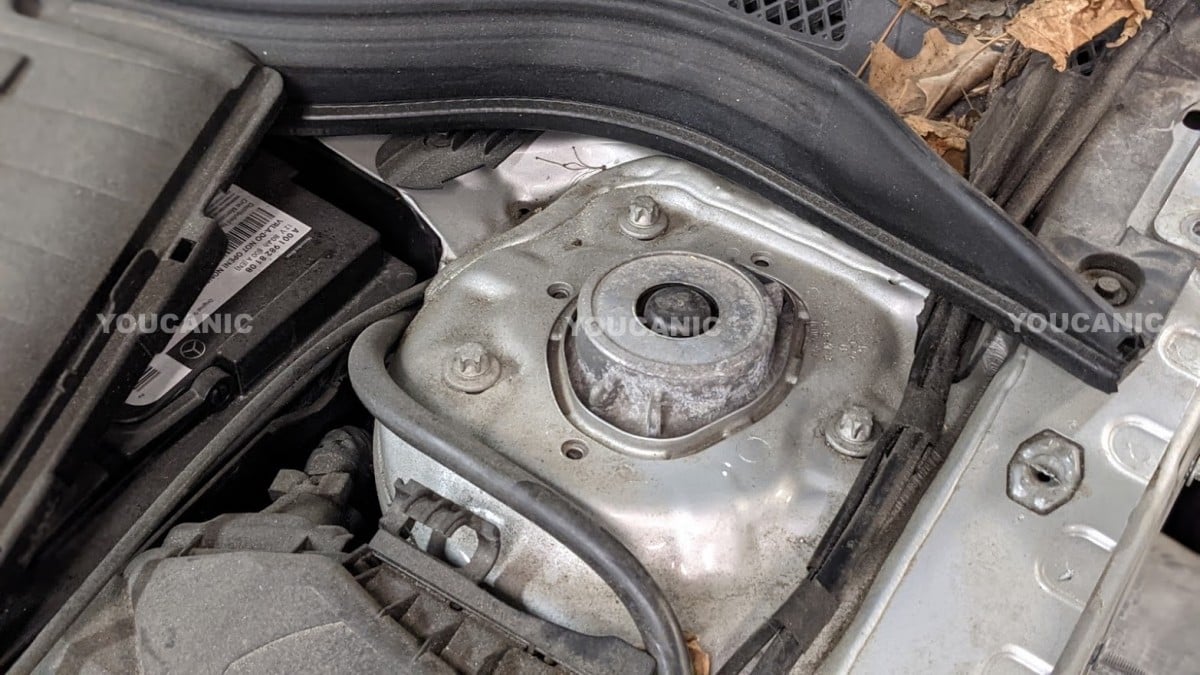
The strut mounts allow the strut to rotate freely about the frame. Once a strut mount fails, it can restrict this movement and make turning the steering wheel hard. A bad start mount can make the steering hard to turn, especially at low speeds.
Another related issue to a bad strut mount is that the steering wheel doesn’t return to the center after completing the left or right turn. Remember that damaged suspension components or alignment issues such as excessive toe-in/toe-out can also cause this problem.
4. Noise when turning the steering wheel
Do you hear a noise when turning the steering wheel left or right? One of the earliest symptoms of a worn strut mount is a squeak from the top as you turn left and right. Typically, the noise is most notable at low speeds.
A squeaking noise can be caused by other suspension components as well. To determine if that noise is coming from the strut mount is easy. Open the hood and secure it open. Start the engine and turn the steering wheel left and right while a friend listens for the noise at the strut mounts.
Check both strut mounts for noise. The passenger side strut mount fails more frequently than the driver side, so listen to both sides to determine where the noise comes from.
How to inspect strut mounts
Follow these steps to inspect strut mounts and determine if they are bad.
- Start by visibly inspecting each top strut mount for cranks. Check that the strut nut is tight.

- Continue with a road test.
 As you drive, pay attention to the following symptoms:
As you drive, pay attention to the following symptoms:
– Squeaking when turning the steering wheel.
– Steering wheel binding.
– Clunk noise when hitting speed bumps. - Pull the vehicle into the shop and lift the weight of the wheels. Turn the steering wheel from clock to clock while someone listens carefully at each strut mount and compares the sound.
- With the wheels off the ground, grab the springs near the top and try to shake the strut. If you notice movement, you may have a bad strut mount.

Conclusion
Diagnosing a bad strut mount can be challenging even for experienced mechanics because other suspension components, such as worn sway bar links and bushing, can cause similar noises.
If you notice clunking, grinding, creaking, or knowing noises, especially when turning the steering wheel lock-to-lock, at slow speeds, or hitting speed pumps, the top strut mounts could be the culprit. Have a certified mechanic inspect and diagnose your vehicle as soon as possible.
Frequently Asked Questions
Do I need to get wheel alignment after I replace a strut mount?
Yes. The vehicle will need front-end alignment after replacing one or both strut mounts. You can align just the front tires, or if the vehicle has not had an alignment in a long time, it is recommended to get an all-wheel aliment.
Can you replace just the strut mount?
Yes. You can replace just the strut mount and keep the strut and spring, especially if they are relatively new. If the trusts have not been replaced in over 50,000 miles, it is recommended to replace the struts.
How do you quieten a bad strut mount?
You can spray silicone grease or WD-40, but those will eventually wash away, and the squeak will return.
How much does it cost to replace a strut mount?
It takes between one to two hours to replace a strut mount. The cost of the parts ranges between $50 and $120. Considering labor and parts, most mechanics will charge between $150 and $250 to replace one strut mount. The cost will be significantly higher if you replace the struts at the same time. High-end luxury and sports cars have more complex front suspension systems and are usually more expensive.
We hope you find the Symptoms of Bad Strut Mount guide helpful. Check these troubleshooting and repair guides for more help on your vehicle.





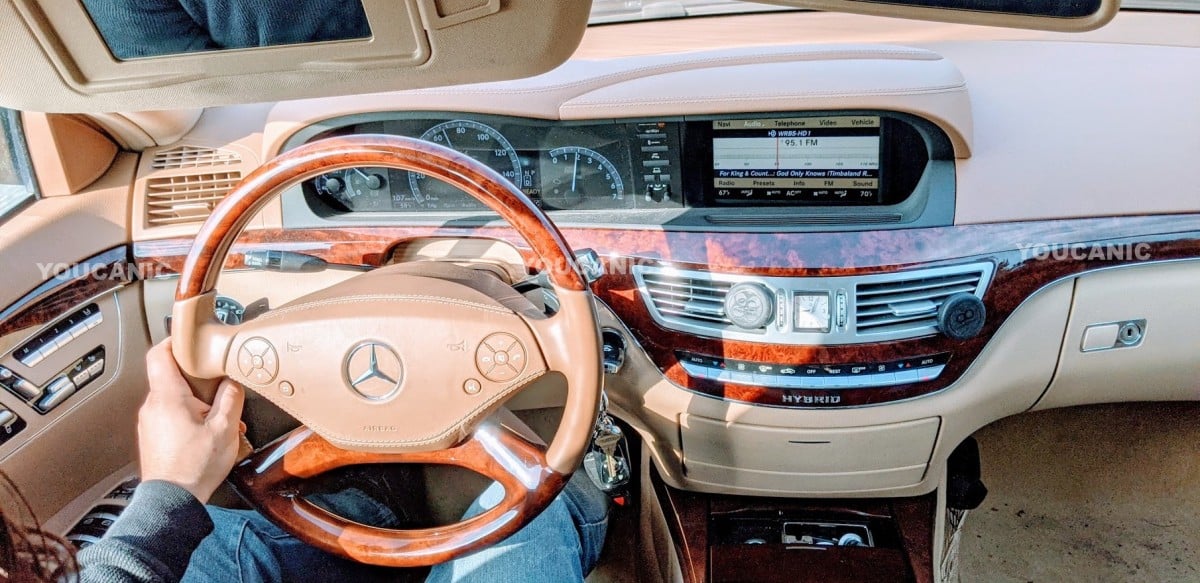 As you drive, pay attention to the following symptoms:
As you drive, pay attention to the following symptoms: